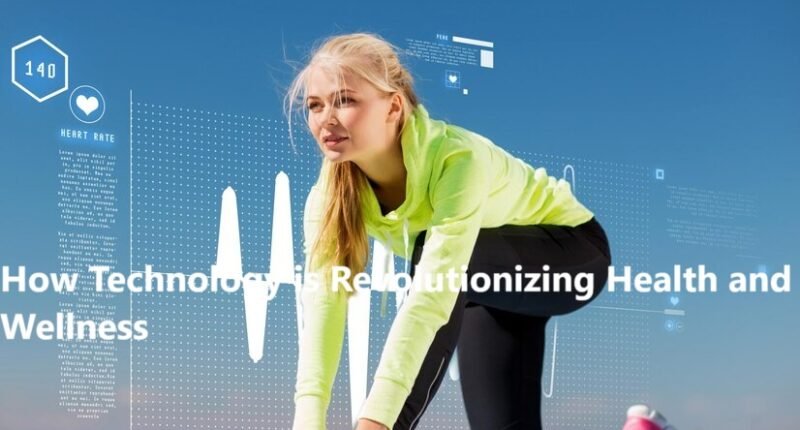In today’s fast-paced world, technology is transforming every aspect of our lives, and health and wellness are no exceptions. From wearable devices to artificial intelligence (AI), technological advancements are empowering individuals to take control of their health and enabling healthcare providers to deliver more personalized and efficient care. Below, we delve into how technology is revolutionizing health and wellness in unprecedented ways.
1. Wearable Technology: Empowering Personal Health Management
Wearable devices such as fitness trackers, smartwatches, and biosensors have become a staple in modern health management. These gadgets provide real-time data on heart rate, sleep patterns, physical activity, and more, enabling users to monitor their health daily.
- Key Benefits: How Technology is Revolutionizing Health and Wellness
- Early detection of irregularities such as arrhythmias or oxygen level drops.
- Encouragement to adopt healthier habits through gamification and reminders.
- Future Trends: Integration with AI for predictive analytics and more accurate health insights.
2. Telemedicine: Bridging Gaps in Access to Care
Telemedicine has revolutionized how patients interact with healthcare providers, especially during the COVID-19 pandemic. Remote consultations via video calls, chat platforms, or mobile apps ensure that patients can access medical advice without leaving their homes.
- Advantages:
- Increased access to healthcare in remote or underserved areas.
- Reduced waiting times and healthcare costs.
- Technological Innovations:
- AI-driven chatbots for initial diagnoses.
- Virtual reality (VR) for physical therapy sessions.
3. Artificial Intelligence: Transforming Diagnosis and Treatment
AI is redefining diagnosis and treatment protocols by analyzing vast datasets to identify patterns and predict outcomes. It’s used in areas ranging from oncology to mental health care.
- Applications:
- AI algorithms for early detection of diseases like cancer.
- Personalized treatment plans based on genetic data.
- Future Potential:
- Predictive healthcare models for proactive treatment.
- Advanced robotics for precision surgeries.
4. Mobile Health Apps: Your Health in Your Pocket
Mobile health (mHealth) apps are helping individuals track their wellness goals and medical conditions. Whether it’s calorie counting, mental health support, or chronic disease management, there’s an app for nearly every health need.
- Popular Features:
- Integration with wearable devices.
- Real-time medication reminders.
- Telehealth functionalities for virtual doctor visits.
- Examples: Apps like MyFitnessPal for nutrition and Headspace for mindfulness.
5. Genomics and Personalized Medicine
The mapping of the human genome has opened doors to personalized medicine, where treatments are tailored to an individual’s genetic makeup. Genomic testing is now more affordable and accessible, helping identify risks for certain diseases and enabling targeted therapies.
- Current Uses:
- Pharmacogenomics to determine drug efficacy.
- Early detection of genetic predispositions.
- Future Impact: More precise and effective treatments, reducing trial and error in medical care.
6. Virtual Reality and Augmented Reality: Enhancing Training and Patient Care
VR and AR are revolutionizing medical training and patient care. From simulating surgeries for training to treating phobias and PTSD, immersive technology is making a significant impact.
- In Medical Training:
- Virtual surgeries for hands-on practice.
- Interactive 3D models for anatomy learning.
- In Therapy:
- VR for exposure therapy in anxiety disorders.
- AR for rehabilitative exercises in stroke recovery.
7. Big Data: Insights for Better Health Outcomes
Big data is transforming healthcare by enabling the collection and analysis of vast amounts of information. This helps identify trends, predict outbreaks, and improve healthcare systems.
- Examples:
- Tracking disease outbreaks in real-time (e.g., flu trends).
- Optimizing hospital resources based on predictive analytics.
- Challenges: Ensuring data privacy and security while maximizing utility.
8. Blockchain: Secure and Transparent Health Records
Blockchain technology ensures the secure storage and sharing of health data. By decentralizing health records, it enables patients and providers to access up-to-date information safely.
- Benefits:
- Reduced risk of data breaches.
- Streamlined sharing of medical records across institutions.
- Future Uses: Integration with wearable devices and IoT for a comprehensive health profile.
9. The Internet of Things (IoT): A Connected Health Ecosystem
IoT devices, ranging from smart thermometers to connected insulin pumps, are creating a seamless health ecosystem. These devices collect and transmit data to healthcare providers, enabling continuous monitoring and intervention.
- Examples:
- Smart home devices for elderly care, such as fall detection systems.
- Continuous glucose monitors for diabetes management.
- Advantages: Improved patient outcomes through real-time monitoring.
10. Mental Health Technologies: Breaking Barriers
Mental health care has seen significant advancements thanks to technology. Apps, virtual therapists, and online support communities are breaking barriers to access.
- Innovations:
- AI-driven therapy tools like Woebot.
- Online platforms offering cognitive behavioral therapy (CBT).
- Impact: Reduced stigma and increased accessibility to mental health care.
Challenges and Ethical Considerations
Despite the immense benefits, the integration of technology in health and wellness comes with challenges:
- Data Privacy: Ensuring the security of sensitive health information.
- Equity: Bridging the digital divide to ensure access for all.
- Over-Reliance: Avoiding dependency on technology at the cost of human interaction.
Conclusion
Technology is undeniably revolutionizing health and wellness, offering innovative solutions to some of the most pressing healthcare challenges. From empowering individuals with personal health data to transforming how medical care is delivered, the future of health technology is promising. However, to maximize its benefits, it is crucial to address the associated challenges and ensure equitable access for all. With continued advancements, the synergy between technology and health will pave the way for a healthier and more connected world.









